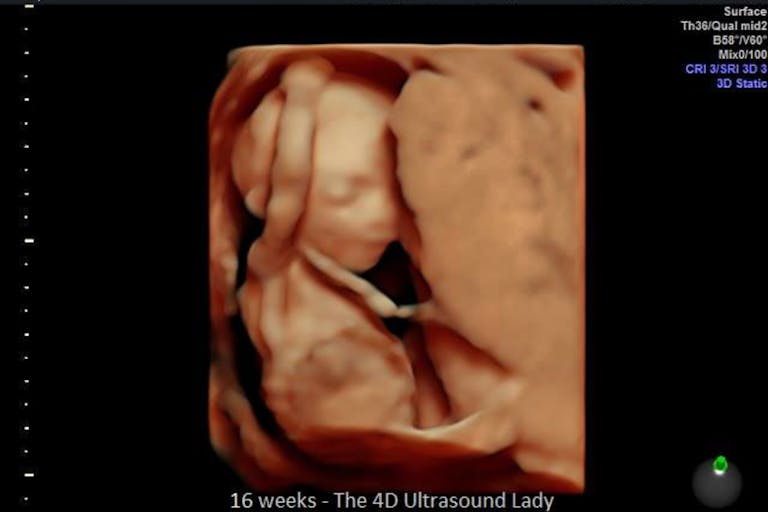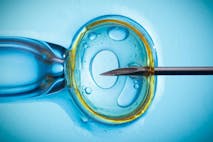
Abortion regret nearly killed Sean. Now he works with a pro-life men's ministry
Lisa Bast
·
Abortionist who seriously injured patient claims abortion is the ‘same medical process’ as miscarriage
The abortion industry is not known for its honesty, with women and former workers reporting manipulative counseling and outright deception. A perfect example is a new article from the pro-abortion site Romper, in which abortionist Diane Horvath — an abortionist sued for malpractice after seriously injuring an abortion patient — purported to explain different abortion procedures. Though the article was allegedly written to dispel medical misinformation, it was filled with inaccuracies and loaded phrasing. From dehumanizing language to semantics, it exists for no other purpose than to minimize the reality of abortion.
A short, safe procedure?
Horvath describes a surgical abortion as a safe and easy procedure designed to remove a “pregnancy” — not a baby, or even a fetus, but a “pregnancy.” She told Romper, “Surgical abortion, which is also called in-clinic abortion, is typically a short, five-minute procedure in an office setting. Another word you might hear people use to refer to a surgical abortion is aspiration abortion.” She added, “A person having an in-clinic abortion is offered various medications to help with discomfort, and most often a follow-up visit is not needed.”
An aspiration abortion is committed by first dilating the woman’s cervix, and then using a powerful suction vacuum to remove the preborn child from the womb. The abortionist finishes by using a curette to scrape the woman’s uterus, to ensure that nothing of the child remains behind.

And while Romper and Horvath dismiss aspiration abortions as safe, even using the predictable “safer than childbirth” line, is that true? While the abortion industry tells women how safe it is, when they’re speaking to each other, they’re much more honest about the dangers. Women risk “minor” complications like cervical laceration, or major complications like hemorrhage, infection, perforation, and death. In addition, as previously reported by Live Action News:
Dr. Byron Calhoun, vice chair of West Virginia University-Charleston’s Department of Obstetrics and Gynecology, published a report noting that the claim of abortion being 14 times safer than childbirth is “unsupported by the literature and there is no credible scientific basis to support it” because there are too many factors at play to make such a claim. His report’s abstract lists some of these factors as:
… incomplete reporting, definitional incompatibilities, voluntary data collection, research bias, reliance upon estimations, political correctness, inaccurate and/or incomplete death certificate completion, incomparability with maternal mortality statistics, and failing to include other causes of death such as suicides.
Even if nothing goes wrong for the mother, the fact is, there is always at least one death during every abortion procedure. So can it really be called safe?
READ: Women furious as Planned Parenthood equates miscarriage and abortion
Semantics and wordplay
Rather than being truthful about what abortion is, Romper and Horvath engage in grammatical trickery to make it seem more palatable. For example, they describe selective reduction — a procedure which kills one or more preborn children when the mother is carrying twins or triplet — as “multifetal pregnancy reduction,” and was framed as something necessary for the health of the mother. “In certain circumstances when a person is pregnant with multiple fetuses — usually triplets or more — the health of the pregnant person and the pregnancy can be threatened,” Horvath claimed. “When this situation occurs, a patient may discuss with their physician reducing the number of fetuses to increase the chances that the pregnancy will progress safely and result in a healthy delivery instead of a pregnancy loss.”
While there are possible complications from being pregnant with multiples, they’re almost all manageable with good prenatal care, thanks to medical advances. Many people choose selective reduction purely because they don’t want twins or triplets, often after implanting multiple embryos while undergoing IVF, despite knowing (yet not wanting) the possibility of multiples.
Horvath also shuns use of the term “late-term abortion,” which has been commonly used in the past by the abortion industry, instead referring to it as “induced abortion” or “abortion later in pregnancy.” Why is one preferable to another? Nothing more than stigma, really; late-term abortion carries a stigma around it, while “induced abortion” is a much more vague term that allows abortion advocates to keep the reality of what late-term abortion is from the public. And Horvath even tried to conflate a stillbirth and an abortion.
“Spontaneous abortion can mean a miscarriage that passes out of a pregnant person’s body, or a pregnancy that stops growing and requires medication or a procedure to remove it,” she said. “An induced abortion is either a procedure or a series of medications that are used to end a pregnancy. The medical process in these latter two experiences are the same.”
Article continues below
Dear Reader,
In 2026, Live Action is heading straight where the battle is fiercest: college campuses.
We have a bold initiative to establish 100 Live Action campus chapters within the next year, and your partnership will make it a success!
Your support today will help train and equip young leaders, bring Live Action’s educational content into academic environments, host on-campus events and debates, and empower students to challenge the pro-abortion status quo with truth and compassion.
Invest in pro-life grassroots outreach and cultural formation with your DOUBLED year-end gift!
This is a gross mischaracterization. One is a necessary process after a preborn child has died and needs to be removed from the mother’s body; the other is the intentional taking of a life. In a late, induced abortion, the active and purposeful killing of a child is done by way of an injection into the heart of the preborn child to cause cardiac arrest. This can be done in the late second or third trimester, and takes multiple days to complete.
In addition, the medical process after a late miscarriage or stillbirth is not even remotely similar to a second trimester abortion. It is a violent procedure:

It can also be dangerous, as Horvath herself should know; she was the subject of a malpractice suit after botching a dilation and evacuation, or D&E, procedure. The patient’s uterus was perforated, her right ovary and fallopian tube destroyed, and the damage was so extensive that she had to be hospitalized to undergo corrective surgery to repair lacerations, stop her bleeding, and even remove her appendix. While in the hospital, it was also discovered that Horvath had not completed the abortion either, leaving parts of the baby inside the uterus.
Health of the mother?
Unsurprisingly, this article also pushes the idea that late-term abortions are rare. Horvath claims abortions “later in pregnancy” — as opposed to late-term abortions, which Horvath says do not exist — are “rare and done for health reasons or because of a fetal anomaly.”
This is shockingly inaccurate.
Abortion, to begin with, is never necessary to save the life of a mother. If there truly is an emergency necessitating ending a pregnancy, a doctor will perform a c-section or induce birth. If it is too early in the pregnancy, this may mean the baby will not survive… but the baby’s life is not intentionally being taken, and these procedures take mere hours, as opposed to multiple days.

The abortion industry itself has admitted that late-term abortions are not primarily done for fetal abnormalities. A 1988 Guttmacher study found that only 2% of women sought late-term abortions because of a health problem with the baby. Another Guttmacher study, published in 2013, also said, “data suggest that most women seeking later terminations are not doing so for reasons of fetal anomaly or life endangerment.” Pro-abortion researcher Diana Greene Foster has stated, according to a report from the Congressional Research Service, that abortions for fetal abnormalities “make up a small minority of later abortion.” And a 2010 paper from Julia Steinberg, of the pro-abortion Bixby Center for Global Reproductive Health, said, “Research suggests that the overwhelming majority of women having later abortions do so for reasons other than fetal anomaly (Drey et al., 2006; Finer et al., 2005, 2006; Foster et al., 2008).”
The abortion industry and its defenders continually claim that abortion is something positive, that it benefits women, is safe and should be widespread. Yet if that were truly the case, why would abortion advocates need to lie about what abortion entails?
“Like” Live Action News on Facebook for more pro-life news and commentary!
Live Action News is pro-life news and commentary from a pro-life perspective.
Contact editor@liveaction.org for questions, corrections, or if you are seeking permission to reprint any Live Action News content.
Guest Articles: To submit a guest article to Live Action News, email editor@liveaction.org with an attached Word document of 800-1000 words. Please also attach any photos relevant to your submission if applicable. If your submission is accepted for publication, you will be notified within three weeks. Guest articles are not compensated (see our Open License Agreement). Thank you for your interest in Live Action News!

Lisa Bast
·
Analysis
Cassy Cooke
·
Analysis
Nancy Flanders
·
International
Angeline Tan
·
Pop Culture
Cassy Cooke
·
International
Cassy Cooke
·
Analysis
Cassy Cooke
·
International
Cassy Cooke
·
Pop Culture
Cassy Cooke
·
Politics
Cassy Cooke
·
Politics
Cassy Cooke
·